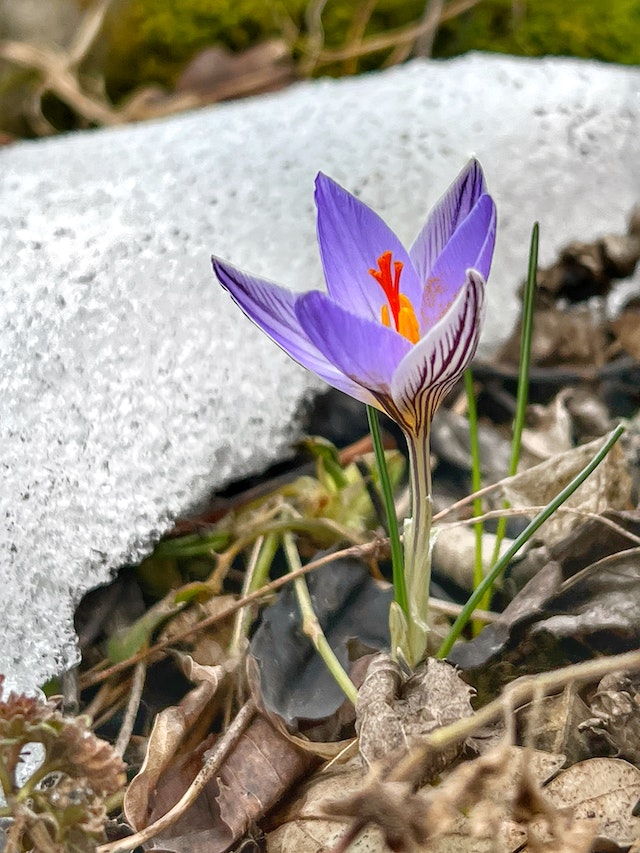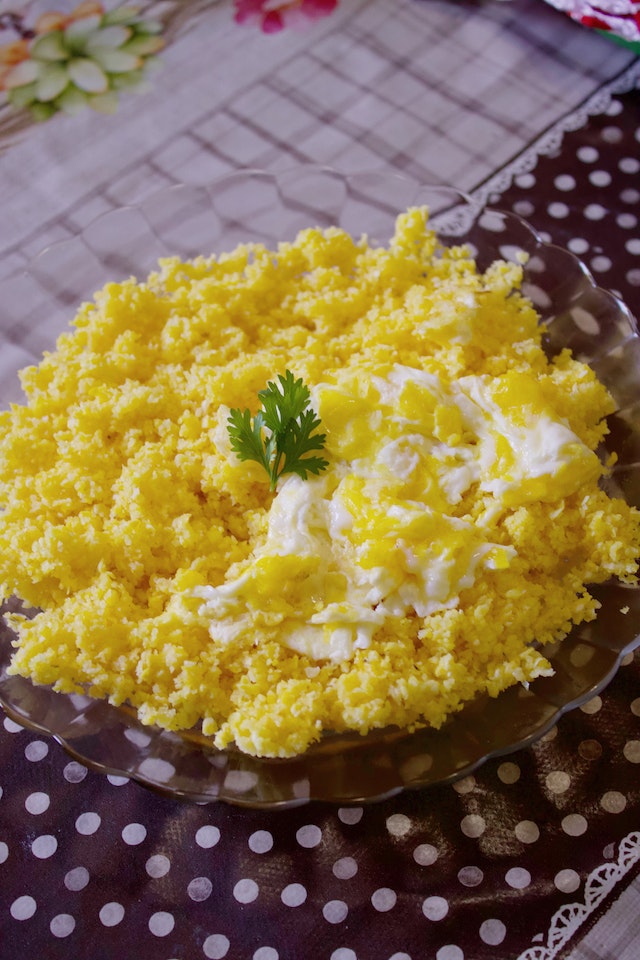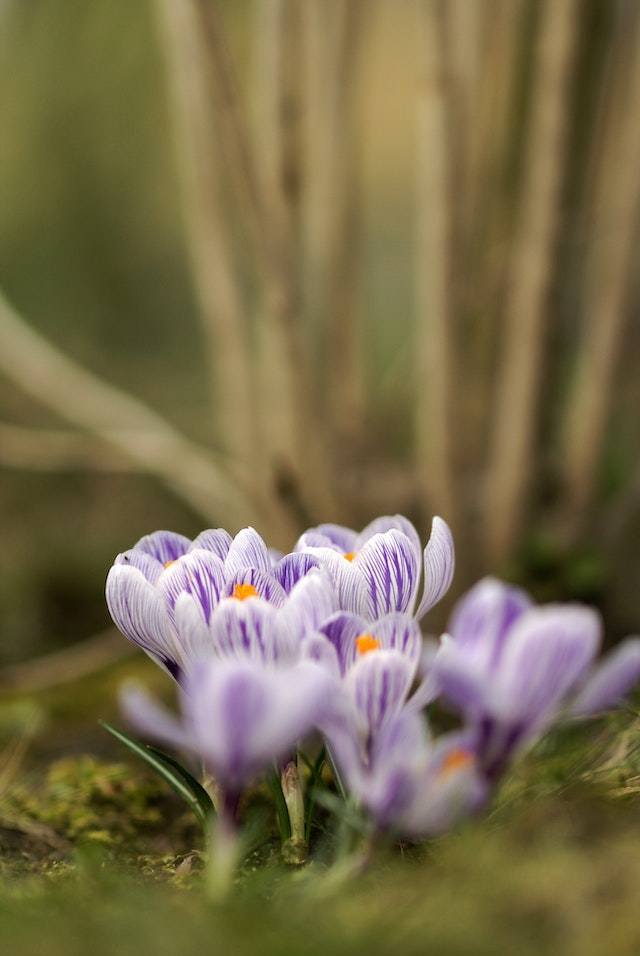About plant
Saffron 101
Thriving in well-drained soil and a sunny environment, Saffron boasts delicate violet flowers that emerge in the autumn. Saffron cultivation demands meticulous care, as each flower yields only a few precious threads, making it one of the world’s most labor-intensive spices.
From Farm to Table
Cultivation
Harvesting
The delicate purple flowers appear in the autumn. Saffron threads, or stigmas, are hand-harvested from each flower. Due to the labor-intensive nature, large-scale saffron production involves a considerable workforce.
Drying
After harvesting, the saffron threads are carefully separated from the flowers. They are then dried to preserve their flavor, color, and aroma. This drying process is crucial for the spice's quality.
Packaging
Once dried, saffron threads undergo grading based on factors like color, aroma, and flavor. The highest quality saffron is then packaged for distribution. Stringent quality standards ensure that only the finest saffron reaches consumers.
About Saffron
History
Saffron has a rich history dating back over three millennia. Believed to originate in Southwest Asia, it gained prominence in regions such as ancient Persia (modern-day Iran) where it was cultivated for medicinal and culinary purposes.
In the Middle Ages, Arab traders introduced saffron to Europe, and it became a sought-after spice in medieval cuisine and for dyeing textiles. During the Renaissance, the spice’s popularity soared, and cultivation expanded to Spain and other Mediterranean countries.
Saffron’s allure extended to India, where it found its place in both Ayurvedic medicine and culinary traditions. The spice also played a role in religious ceremonies and rituals.
Despite its enduring popularity, saffron’s labor-intensive harvesting process has contributed to its reputation as one of the world’s most expensive spices. Today, saffron continues to be a symbol of luxury, flavor, and vibrant color in global cuisines and remains deeply woven into the cultural and culinary tapestry of various regions.
circa 2100 BCEAntiquity
Saffron usage traces back to ancient Mesopotamia, where it was valued for its medicinal properties and used in culinary practices.
circa 600 BCEPersian Empire
Persians cultivated saffron and recognized its economic importance, incorporating it into trade and religious ceremonies.
circa 500 BCE - 100 CEAncient Greece and Rome
Saffron reached ancient Greece and Rome, becoming a symbol of luxury. It was used in culinary dishes, perfumes, and medicines.
circa 500 - 1500 CEMiddle Ages
Arab traders introduced saffron to Europe, where it became a sought-after spice. Monasteries in Spain played a key role in its cultivation.
14th - 17th centuriesRenaissance
Saffron continued to flourish in Europe during the Renaissance, with Spain becoming a major saffron-producing region, particularly in La Mancha.
16th - 18th centuriesColonial Expansion
Saffron cultivation expanded to the Americas during European colonial efforts, with settlers introducing it to regions like Pennsylvania.
17th - 19th centuriesIndian Influence
Saffron gained prominence in Indian cuisine and Ayurvedic medicine, becoming an integral part of cultural and religious practices.
20th century - presentModern Era
Iran emerged as the largest global producer of saffron. The spice's popularity continued to grow, and it found diverse applications in culinary, medicinal, and cosmetic industries globally.
About Saffron
Use cases
Culinary Delights
Saffron is a staple in various cuisines, adding a unique flavor and vibrant color to dishes such as paella, risotto, and biryani.
Beverages
It enhances the flavor and visual appeal of beverages like saffron-infused teas, cocktails, and traditional drinks like Iranian saffron milk.
Desserts
Saffron elevates sweet treats, including ice creams, cakes, and pastries, with its distinctive taste and golden hue.
Health Tonics
In traditional medicine, saffron is used in herbal teas and tonics for its potential health benefits, including antioxidant properties.
Beauty and Skincare
Saffron is incorporated into beauty products for its reputed skin-brightening and anti-inflammatory properties, used in masks, creams, and oils.
Aromatherapy
The aromatic qualities of saffron make it a valuable component in potpourri, scented candles, and essential oils, contributing to a soothing ambiance.
Textile Dyeing
Historically, saffron was used as a natural dye for textiles, creating warm and rich hues in fabrics.
Ceremonial and Religious Use
Saffron holds cultural significance in various rituals and ceremonies, symbolizing purity and auspiciousness in certain traditions and religions.
Health benefits
Antioxidant Properties
Mood Enhancement
Anti-Inflammatory Effects
Improved Cognitive Function
Pain Relief
Heart Health
Regulation of Blood Sugar
Vision Health

Industries
Beauty & skin care
Saffron, a prized spice known for its vibrant color and rich aroma, is used in the beauty industry. Recognized for its antioxidant and anti-inflammatory properties, saffron is increasingly incorporated into skincare products. From saffron-infused creams to facial masks, beauty enthusiasts are embracing this natural ingredient for its potential to promote radiant skin, combat signs of aging, and provide a luxurious sensory experience, adding a touch of opulence to skincare routines.

Industries
Food & restaurant
Saffron, esteemed for its distinctive sensory profile, serves as a culinary cornerstone within the food industry. Renowned for imparting a unique flavor, vivid color, and subtle fragrance, saffron is an indispensable ingredient across diverse cuisines. From savory entrees to delicate desserts, chefs leverage saffron’s sophistication to elevate gastronomic experiences, showcasing the spice’s versatility.

Industries
Health & medicine
Saffron, esteemed for its medicinal properties, is gaining prominence in the medical industry. Rich in antioxidants and anti-inflammatory compounds, saffron demonstrates potential health benefits. Research suggests its efficacy in mood enhancement, pain relief, and potential cardiovascular support. As interest grows, saffron is becoming a subject of scientific inquiry, with the medical industry exploring its applications in therapeutic contexts, marking a promising intersection between traditional spice and modern medicine.